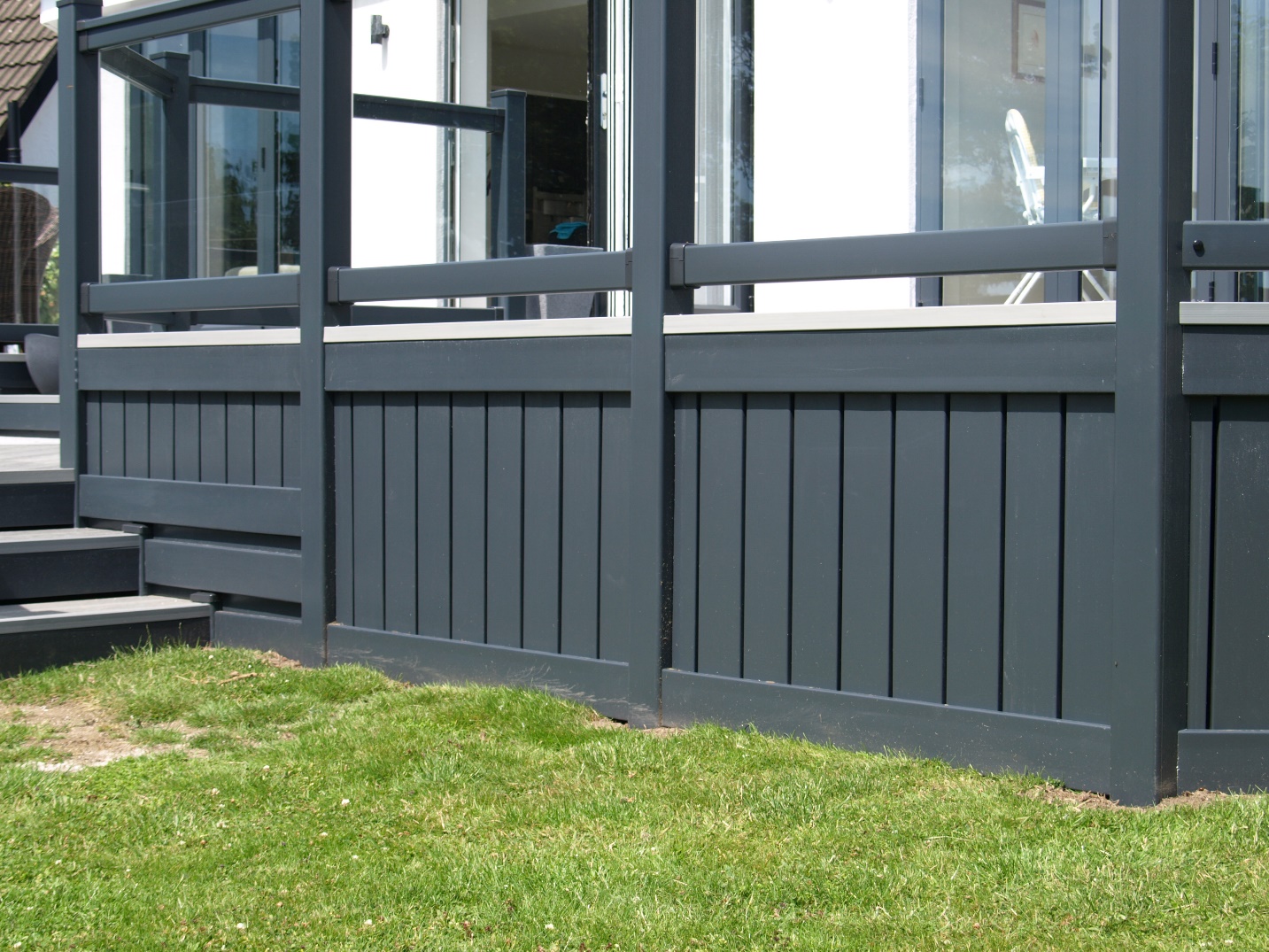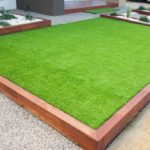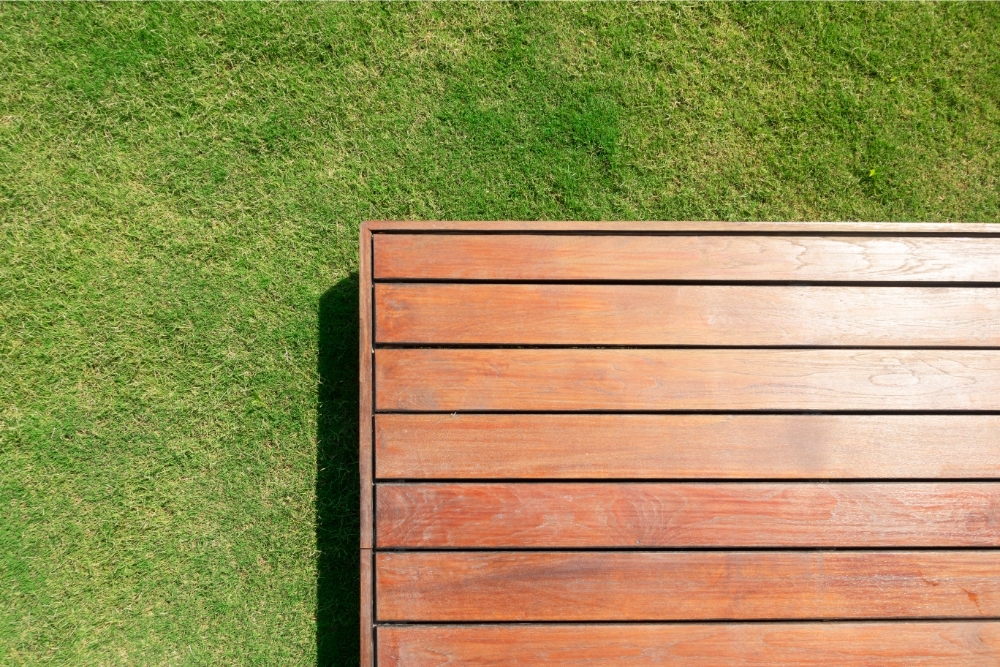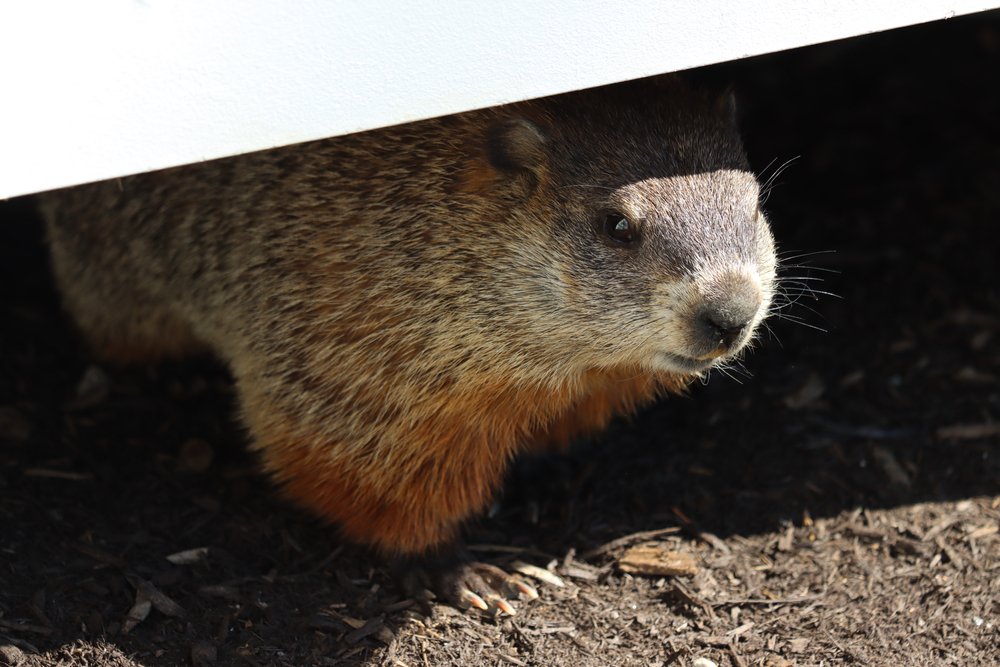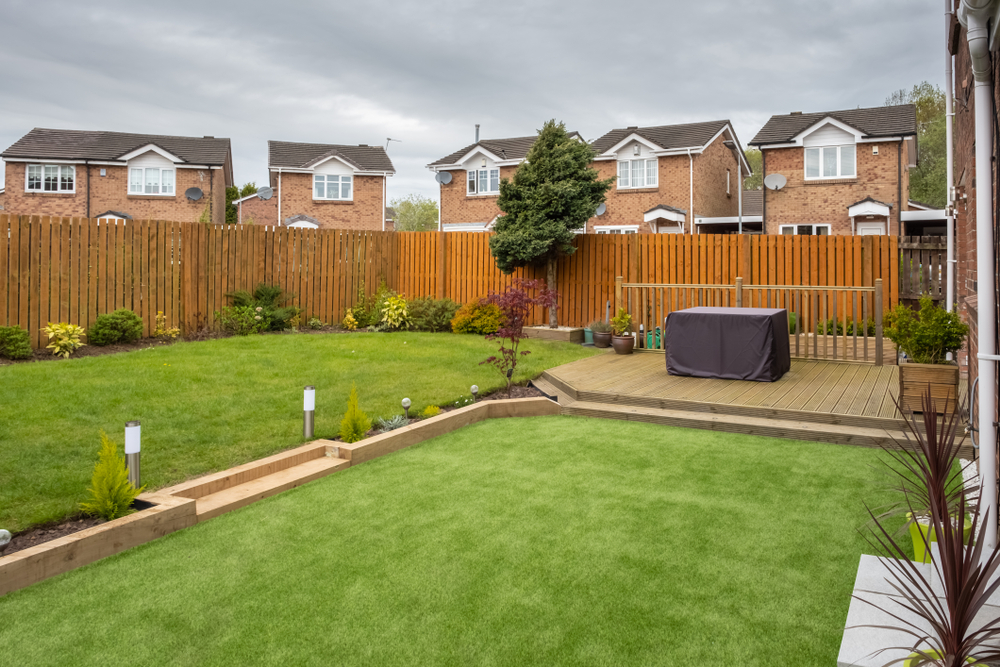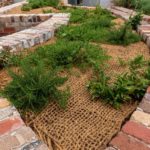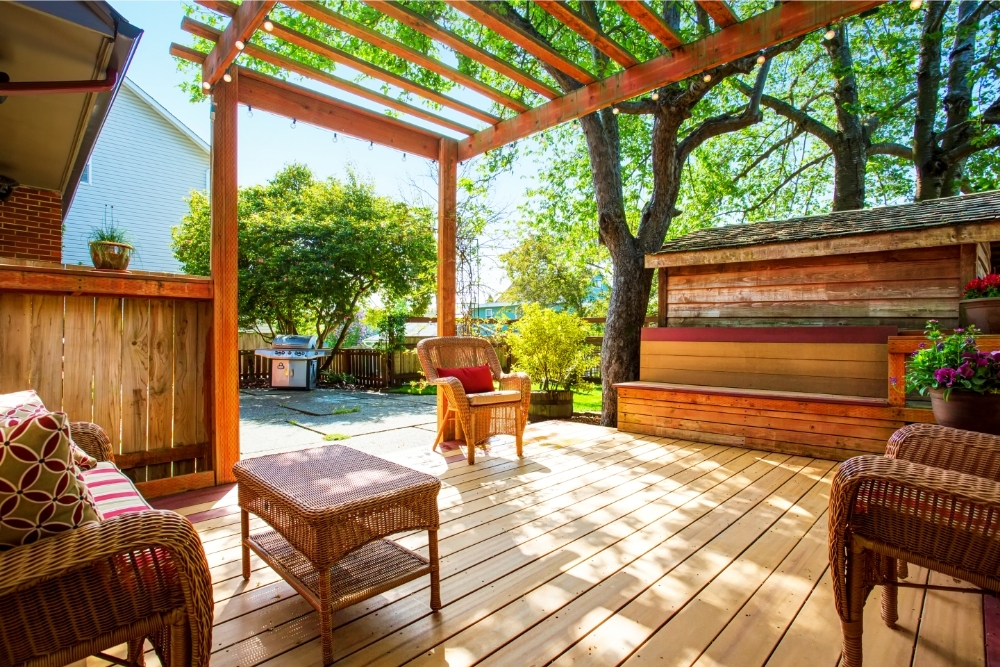Trampolines can significantly damage your grass and come in the way of you having a well-manicured lawn with lush grass. This is primarily because the jumping mat filters out sunlight and prevents water from reaching the soil.
To preserve the grass under your trampoline, you can move your equipment regularly, so it gets sufficient sunlight, put it over a sprinkler so that the soil gets enough moisture, or install the trampoline in the ground. You can also lay rubber mulch or sand underneath it.
The problem gets worse if you have a big trampoline instead of a smaller one. And sure, you can grow grass that doesn’t need much light or water. But it’s better and more viable if you take some precautions in advance.
How Do You Keep the Grass Under Your Trampoline Alive?
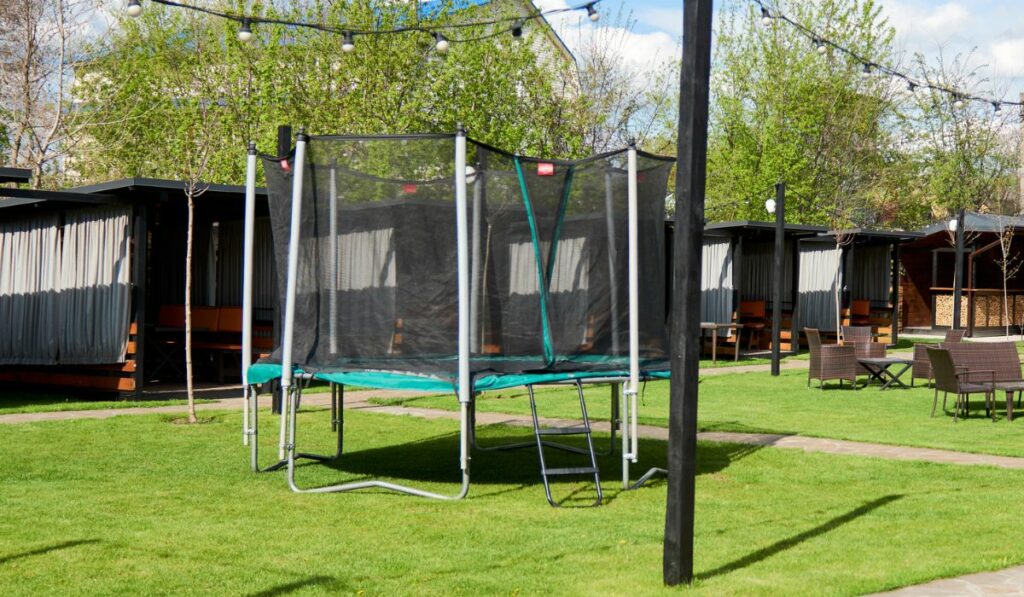
The grass under your trampoline dies for two reasons: lack of sunlight and insufficient water.
Trampolines have dark jumping mats designed to be thick and sturdy so they don’t break easily and jumpers don’t fall through them. However, the dark color and thickness prevent sunlight from reaching the grass below.
Similarly, grass needs moisture to survive, and it depends on rain or sprinklers to provide it with sufficient water. However, a trampoline doesn’t allow it to have either of those things. Instead, the thick mat catches nearly all the moisture (whether from the rain or the sprinkler) and prevents it from going down to the soil.
Not to mention, the constant bouncing and the trampoline’s weight can also affect your grass. Whenever you jump on the trampoline, it sinks further into the ground and causes more pressure. Eventually, the pressure can cause the grass to die.
Luckily, you can do several things to keep the grass below your trampoline alive.
Move Your Trampoline Regularly
Grass can last roughly for a week without water and direct sunlight. So if you keep the trampoline in one place for about a week, your grass might survive. However, if you keep it there for longer than that, your grass will most likely die.
The easy way to prevent this is to move the trampoline regularly and do so at a time you’ll remember. In other words, you need to make a habit of moving your trampoline once a week.
So, for instance, if you mow your lawn every week, you can make it a habit of placing the trampoline on another spot after you’re done cutting the whole lawn. Even if you don’t mow it every week, try associating some other weekly activity with moving the trampoline so that you don’t forget it.
By moving the trampoline, you give your grass some room to breathe. And since it won’t cover just one patch of grass that’ll eventually die out, your garden will stay lush and green. Even if the grass has started to dry out, moving the trampoline will give them a chance to recover fully.
However, moving the trampoline is viable only if you have numerous level spots in your yard or garden. You should always place trampolines on level ground to ensure safety. Also note that some trampolines are very heavy, and you’ll need a helping hand to move them around.
Make Sure it’s Getting Enough Water
As mentioned earlier, the trampoline mat catches nearly all the moisture that falls on it and doesn’t let any of it pass through to the ground. As a result, the grass underneath has little chance of getting the much-needed moisture from above.
In this case, the best thing you can do is put the trampoline directly over a sprinkler. It doesn’t matter if the sprinkler is in-ground or above-ground; you have to keep the trampoline over it so that it doesn’t prevent the grass underneath from getting the much-needed water.
If you’re worried about your trampoline frame being damaged because of the water coming out of the sprinkler, rest assured that there’s nothing to worry about as long as you use a good-quality frame and mat cover. With proper precautions, no harm will come to your trampoline.
However, a wet trampoline can be dangerous to use, so when placing it right over the sprinkler, make sure your kids don’t jump on it when it’s wet or when the sprinkler starts to go off.
And if you can’t move the trampoline regularly, you can invest in an above-ground sprinkler that you can move. This is specifically useful if your primary concern is your grass drying out. If you’re not sure which sprinkler to go with, we’ve provided some tips in another article.
Install an In-Ground Trampoline
Another thing you can do to not worry about preserving the grass under your trampoline is to get rid of both the grass and the ground present underneath. Once you bury the trampoline in the ground (hence the name in-ground trampoline), you won’t need to worry about the grass.
So if possible, dig a hole in the ground for the trampoline or hire experts to do it for you. Once the hole is made, you next need to put a foundation around it to prevent it from caving in. Then you can set the trampoline in the ground.
In addition to not worrying about the grass, there are other benefits of an in-ground trampoline. For instance, it reduces the chances of someone getting hurt if they somehow fall off the trampoline since the jumping mat is level with the grass.
However, before putting it into the ground, choose the right spot since the trampoline will stay in that same place unless you dig it out. And even though this option might be a little expensive to execute, it ensures you don’t have to worry about the grass.
Use Reflective Lawn Decor
Many kinds of grass can survive in diffused light if it’s not entirely blocked. And if your trampoline is blocking the sun from reaching the grass, you can use the simple concept of reflection to provide it with light.
For this, you don’t need a mirror; any shiny lawn ornament will do. And when the sun hits the ornament, the light will be reflected in different directions, including below the trampoline. This reflected light is enough for the grass to thrive.
Placing the shiny object can be a time-consuming and tricky task since you’ll have to find the right angle, but it can be worth it.
What to Do if Your Grass is Still Dying
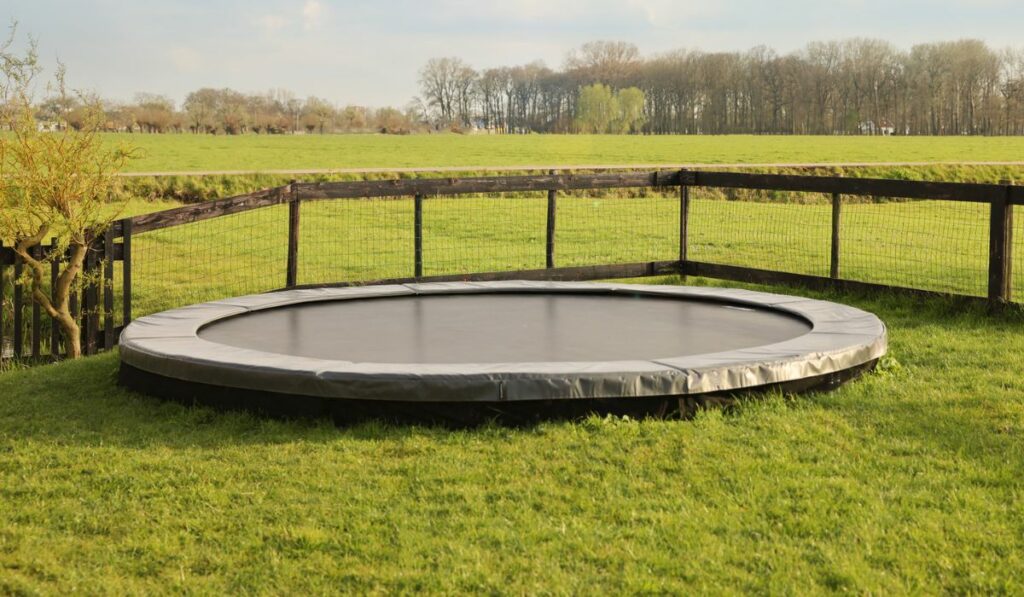
If you’ve tried everything above and your grass is still dying, there’s a variety of landscaping options to maintain your yard’s aesthetic.
Replace it with Artificial Grass
If you’ve tried your best but still can’t seem to keep your grass alive, the next best thing for you could be a synthetic grass mat. Of course, it’s a one-time investment, but it ensures you no longer need to worry about the grass present below the trampoline.
Using artificial grass doesn’t take away just the hassle of maintaining the grass; you also don’t need to move the trampoline around your yard anymore. And when your trampoline stays in place, you don’t need to worry about moving other things.
Lay Some Rubber Mulch
Another thing you can do is lay down a base of organic material like rubber mulch or bark below the trampoline. As a result, you get a soft and stable surface that will absorb the impact of jumping on the trampoline and remove the need to care for the grass below.
Making an organic base is also a one-time thing, and it might just be worth it. So you first need to dig a 10-12 foot deep trench; its diameter should be such that there are roughly 4-6 feet of space all around the trampoline.
Now, fill the trench with your choice of organic material and install some trimming around the edges to keep the material inside.
Fill the Area with Sand
Like mulch, you can also use sand or gravel underneath your trampoline. For example, you can make a sand patch that’s just big enough to put your trampoline on it. It’s not only low maintenance, but it also takes away the hassle of landscaping underneath the trampoline.
Decorate with Shrubs or Cobble Stone
One last thing you can try out is to do some landscaping underneath the trampoline. Some plants and shrubs can grow under the trampoline as long as they don’t grow very high. In addition, you can use cobblestones and stepping stones to decorate the area for a more aesthetic look.

